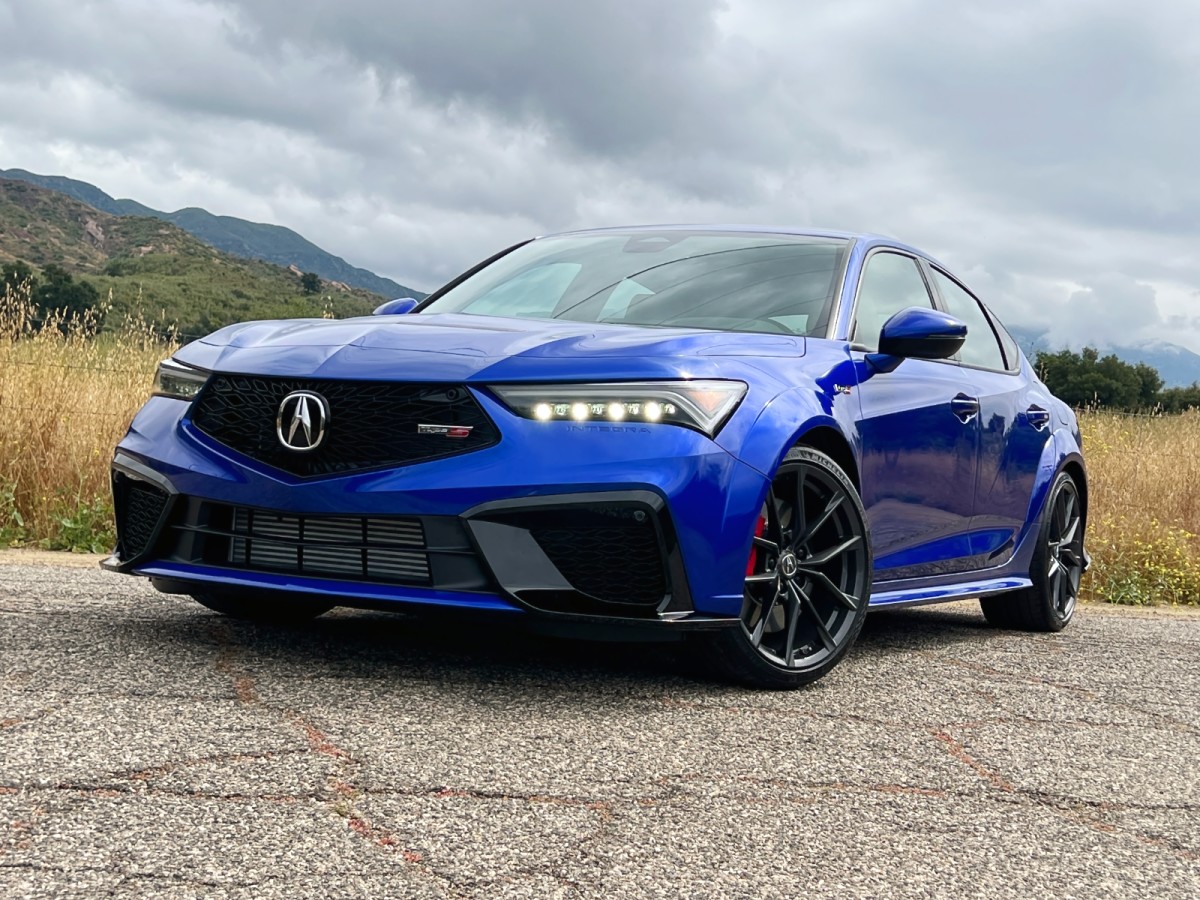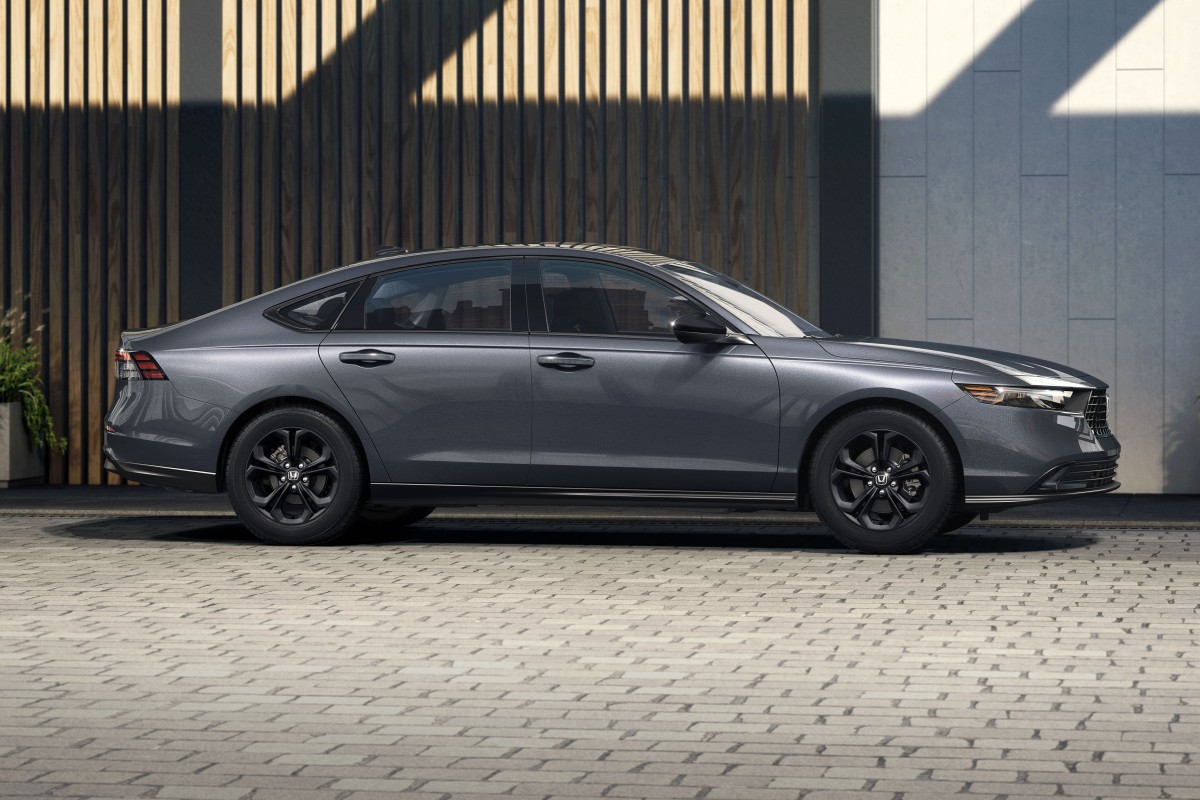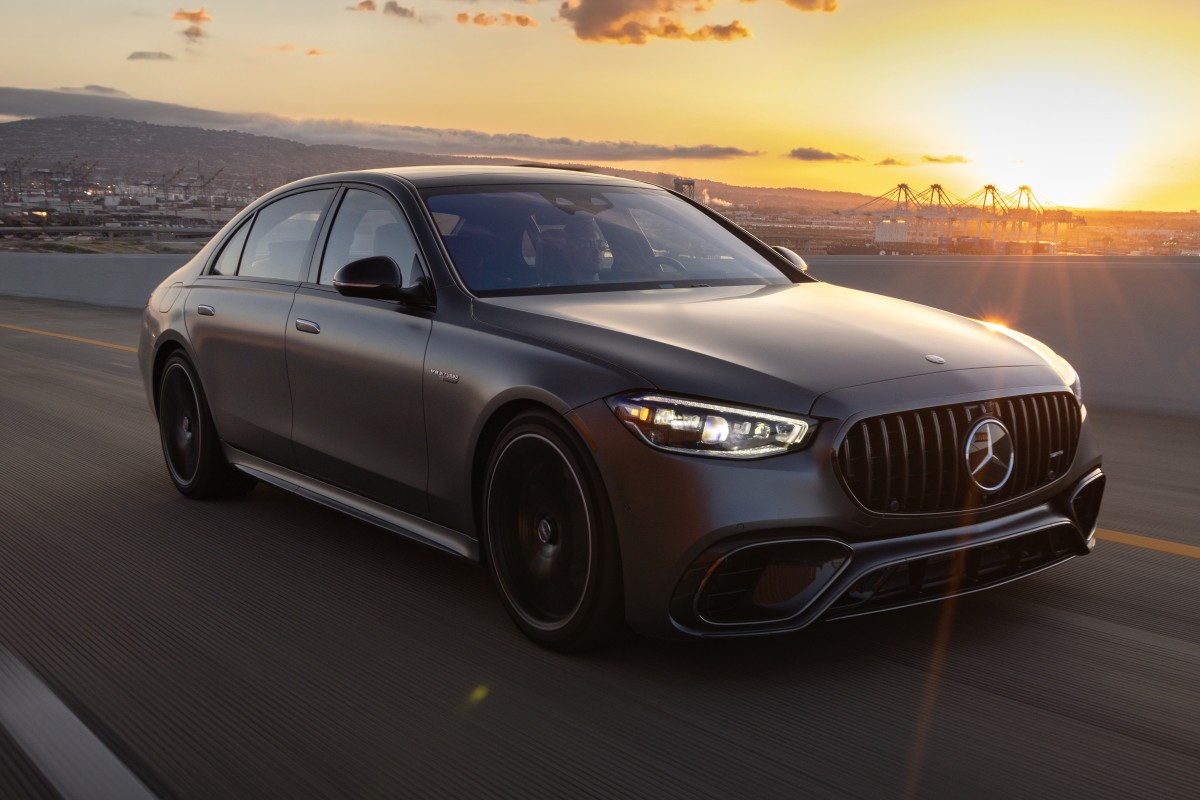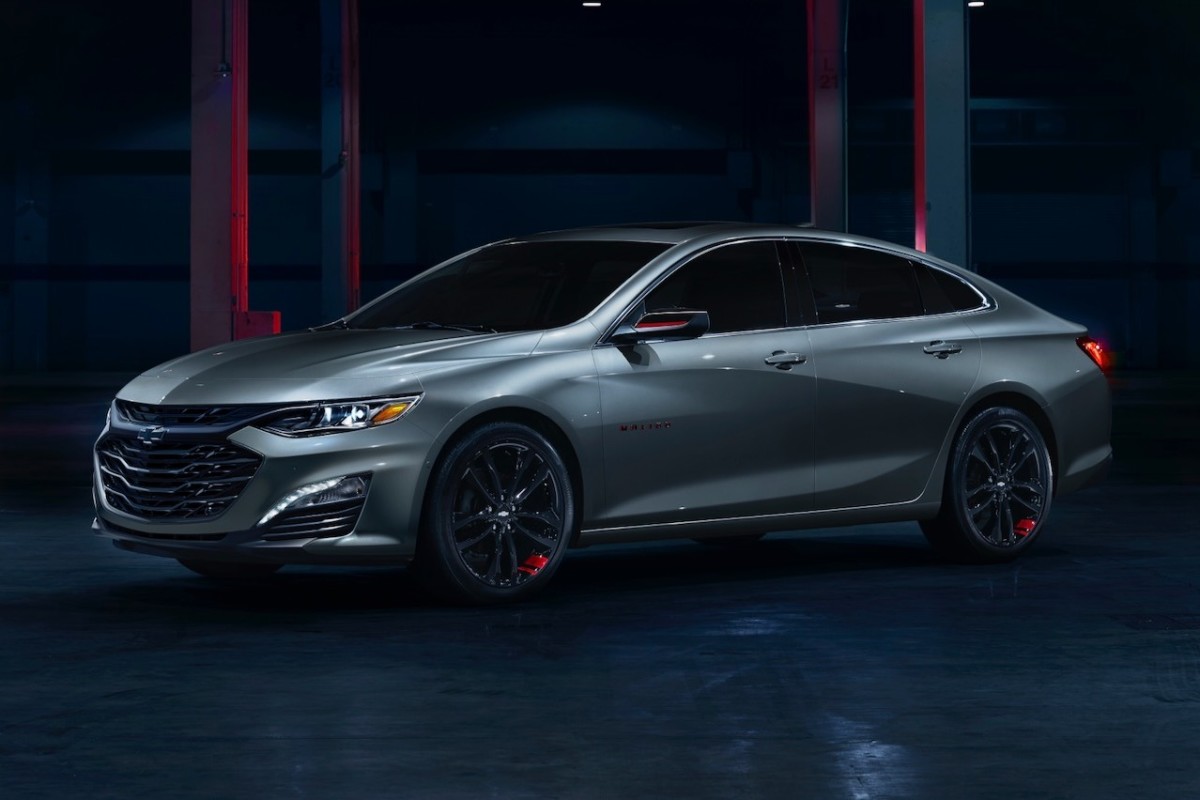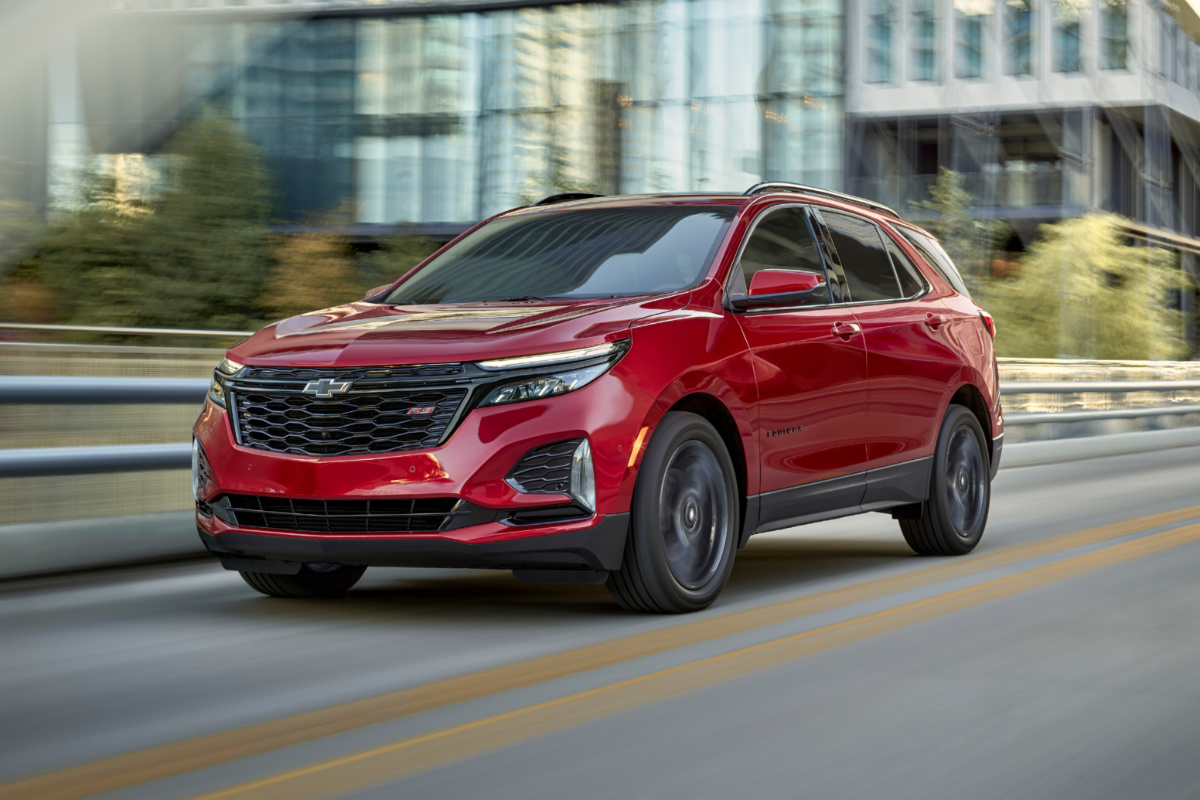Sedans may seem less en vogue these days thanks to crossover SUVs’ prevalence, but they’re not completely dying off. In fact, if you factor in the EV corner of the market—home to models like the Hyundai Ioniq 6—one could say they’re making a comeback.
Sure, some automakers have given up on cars altogether (after the Dodge Charger, Chevy Malibu, and Ford Fusion were discontinued, there are no "domestic" entries on this list), but others are holding fast, offering some of the new car market’s best sedans, ever.
Like he Honda Civic, Hyundai Elantra, and Mazda3—talk about great-looking and well-appointed values. The premium and luxury sedan worlds are going strong, too, from the compact Acura Integra and Audi A3 to the full-size Genesis G90 and BMW 7 Series.
From light and lithe sports sedans to big luxury limos, they’ve got the upper hand on SUVs, too. Cars are generally lighter, smaller, and lower to the ground than SUVs, attributes which make for better driving dynamics and fuel efficiency.They’re also often less expensive than equivalently equipped SUVs. With average new-car prices hovering around $50,000, that’s important to many shoppers.
We've gathered some of the best sedans—and, by proxy, best cars—of 2025 for your consideration, with options to suit your need for value, luxury, or power.
The Best Sedans of 2025
- Acura Integra
- BMW 3 Series
- Genesis G80
- Honda Accord
- Honda Civic
- Hyundai Elantra
- Hyundai Sonata
- Lexus ES
- Mercedes-Benz S-Class
- Toyota Camry
Acura Integra
One of the Japanese brand’s original 1980s products, the Acura Integra returned to great fanfare in 2023 after a two-decade absence. Like the original, this new Integra shares considerable DNA with the humble Honda Civic, but Acura has created a car that’s a genuine rival for pint-size luxury machines like the Audi A3 and Mercedes-Benz CLA-Class, with fine materials, sleek styling, compelling performance, and an abundance of equipment that costs thousands more on those European alternatives.
The Integra comes standard with a 200-horsepower turbocharged 1.5-liter four-cylinder engine, shared with the Honda Civic Si. It’s the least powerful engine in its class, but the Integra’s light and lithe chassis makes it fun even with the standard continuously variable automatic transmission (CVT), and it’s even better with the available six-speed manual. The 320-horsepower, manual-only Integra Type S debuted for the 2024 model year and costs nearly $53,000, but all of its rivals cost even more, and few are as satisfying to drive.
The little Acura’s performance is only part of the equation. The automaker bundles in loads of safety and driver-assist gear, including adaptive cruise control that works with the manual transmissions. There’s also plenty of in-car tech and a hugely roomy interior that puts even pricier luxury cars to shame. Available only as a hatchback, cargo room is enormous by compact car standards and at the top of the class among small luxury entries.
BMW 3 Series
In the world of compact luxury sedans, the BMW 3 Series casts a long shadow. It’s been a benchmark of performance and refinement for its class since the 1970s, and its most recent full redesign for the 2023 model year marked a return to form in terms of fun and driver involvement. With additional updgrades for 2025, the 3 Series is solidified as one of the highest-rated sedans in our rankings.
For 2025, there are two basic variations, the entry-level 330i and the M340i. Each is rear-wheel drive (RWD) to start, with all-wheel drive (AWD) optional, and each one accelerates, handles, and brakes like a proper sports sedan. Plus, both get surprisingly good fuel economy. There are no more wagons on sale in this lineup, and if you want a convertible or two-door hatchback (Gran Coupe, as BMW calls it), you should check out the 4 Series. But the 3 Series is a practical machine with ample trunk space, even if the back seat isn’t huge.
Inside, each 3 Series sedan sports a pretty curved display dashboard with a 14.9-inch infotainment screen and 12.3-inch instrument cluster under a single pane of glass, and it runs BMW’s latest iDrive 8.5 software. It can be complex to use, but there’s a helpful virtual assistant and lots of nice features, though the cabin isn’t as opulent as that of the Mercedes-Benz C-Class. The downsides? The 3 Series isn’t cheap, and BMW makes buyers spend extra to get the nicest driver-assist gear.
Genesis G80
Compared to the Mercedes-Benz E-Class and BMW 5 Series, the Genesis G80 is still a relatively unknown midsize luxury sedan.
It shouldn’t be.
Refreshed for the 2025 model year, the G80 is drop-dead gorgeous inside and out and the epitome of a quiet, refined luxury car. Genesis bundles in lots of equipment and undercuts the Germans on price. But a luxury car should make the driver feel special, and the G80 doesn’t sacrifice performance or gravitas to cut costs. Inside, it’s just as luxe as a Mercedes, and it comes with a choice of potent engines. These include a turbocharged 2.5-liter four-cylinder, which turns out 300 hp, and a twin-turbo 3.5-liter V6 boasting 375 hp. AWD is standard on all models, and the trim lineup has been revised for 2025, now represented by a base 2.5T, 2.5T Advanced, 2.5T Sport Prestige, 3.5T Sport Advanced, and 3.5T Sport Prestige. Each version delivers increasing levels of poshness and tech features like Nappa leather upholstery, automated lane-change assist, rear sunshades and surround-view monitoring. But the most important stuff, like adaptive cruise control, is standard.
The Genesis G80 capably handles twisty roads but skews towards quiet (truly quiet, as the interior is almost like an electric car) comfort and relaxed cruising. It has lots of room in its beautifully appointed cabin, too, with more rear legroom than its German rivals, but the trunk is skimpy. Fuel economy is also only so-so. Genesis also offers a fully electrified G80 with a 280-mile range. Like the Korean automaker's other models, the G80 is also backed by five-year/60,000-mile bumper-to-bumper and 10-year, 100,000-mile powertrain warranties.
Honda Accord
The Honda Accord has been a family-sedan all-star since the 1970s, with credit going to its affordability and dependability, efficiency, comfort and spaciousness, and, until recently, unassuming looks. To remain relevant in an increasingly SUV-hungry automotive landscape, sedans like the Accord have found it necessary to dress themselves in some new sporty duds, so Honda did just that and entirely redesigned the Accord for the 2023 model year.
The 2025 Honda Accord features a slightly revised lineup, with a 204-hp hybrid powertrain used for most configurations, and a 192-hp turbocharged 1.5-liter four-cylinder engine under the hood of non-hybrid LX and SE trims. Its fresh exterior styling gives it a distinctly premium look, and the interior design shares elements with the recently updated Civic, HR-V, and CR-V. The expansive trunk of the previous generation continued into the new one. Leg room, meanwhile, grews marginally larger even though the Accord already dominated most of its opponents in this area.
With six trim and powertrain combinations, the Accord offers something for everyone. The standard advanced safety features make even the base LX a great value proposition, while features like heated rear seats and Bose premium audio make the top Touring trim downright luxurious. Although the Accord isn’t as fun or engaging as it looks, it does just about everything well and has an enviable rep for quality. Regardless of which version you choose, you’ll get a capable sedan that exceeds expectations.
Honda Civic
Redesigned the 2022 model year, the now eleventh-generation Honda Civic is a handsome design inside and out, and much more visually pleasing than its predecessor. But, while it looks very different from before, the Civic still offers a truly impressive mixture of excellent driving dynamics, good fuel economy, enviable safety ratings, generous interior space, and abundant standard equipment. Available as a four-door sedan or an even more versatile hatchback, the FWD Civic lacks an AWD option but, in most every other respect, it meets or exceeds its competitors.
Let’s start with fuel economy: These are small cars, and there isn’t a Honda Civic trim level that provides less than an EPA-estimated 37 mpg highway. (The high-performance Type R is the sole exception, but even that 315-hp hot rod earns a 28-mpg highway rating from the EPA). The Sport Hybrid trim, with its electrically assisted powertrain delivers 50 mpg in the city, 47 mpg on the highway, and 49 mpg combined.
At the top of the trim-level ladder, the Civic Sport Touring provides power leather seats, Bose audio, navigation, a 9-inch touchscreen display with wireless Apple CarPlay and Android Auto, and a 10.2-inch digital gauge cluster. Other standard features include front and rear parking sensors, wireless smartphone charging, and an auto-dimming rearview mirror. With an MSRP just over $33,000, this particular version leans heavily on the Civic’s heritage as a value leader for the Honda brand.
Hyundai Elantra
Consumers might be skewing to crossovers, but subcompacts are better than ever. Our proof? The Hyundai Elantra. Refreshed for the 2024 model year, the current-generation Elantra is a visual feast of trapezoids and triangles, with its sleek shape draping a huge interior. The Elantra’s back seat has almost as much room as the Genesis G80 and it has more trunk space too--14.2 cubic feet to be exact. Hyundai has created an Elantra for virtually any small-car buyer, and they’re all affordable.
The base model uses a 147-hp 2.0-liter four-cylinder engine driving the front wheels via a CVT and costs about $22,000. Higher trim levels offer more equipment and, in the case of the N Line, a turbocharged 1.6-liter engine putting out 201 hp.
There’s also the Elantra Hybrid, with only 139 hp but 195 pound-feet of torque and a talent for returning 50 to 54 mpg combined (EPA-estimated). At the top of the lineup is the 276-hp, enthusiast-oriented Elantra N, available with a dual-clutch automatic transmission or a six-speed manual and lots of performance hardware. Prices for that 2025 Elantra start at about $35,000.
The roomy cabin is a bit drab in the very cheapest Elantras, but Hyundai makes lots of nice technology and safety features available, including 8.0 or 10.3-inch infotainment screens, navigation, adaptive cruise control and lots of other goodies. Leather and faux suede interior trim is also available on the higher trims. While the N is a little pricey, all other trims start below $30,000. Every 2025 Elantra comes with Hyundai’s lengthy warranty.
Hyundai Sonata
The current-generation Hyundai Sonata will crush any preconceived notions you may have about the Korean brand. This is a top-level automobile that easily competes with anything from Honda or Toyota, blows away competition like the Nissan Altima, and does so at a value-packed price. The only real weakness is a smallish back seat, but the Sonata is still comfy for adults and boasts a big, 16-cubic-foot trunk.
Styling is subjective, and Hyundai’s biggest competition here may come from Kia's K5, which is essentially the same vehicle with what some consider a more attractive design. To keep pace, Hyundai gave the Sonata a visual update for 2024 that only improved the looks. Opt for the top-of-the-line trim level and there’s little difference between this car and anything from one of the entry-level luxury brands like Acura and Lincoln.
That said, you can get all of the style without some of the accoutrements for thousands less by selecting an SE or SEL model equipped with FWD or optional AWD and a 191-hp four-cylinder engine. The Sonata Hybrid comes in FWD SEL and Limited versions deliver 192 hp and an EPA-estimated 47 mpg combined. If efficiency is less important than performance, take a look at the 276-hp Sonata N Line.
Lexus ES
It isn’t a particularly exciting car to drive, but the Lexus ES is a bargain. Size-wise, it competes directly with the Genesis G80 and Mercedes-Benz E-Class, but it costs about $15,000 to $20,000 less than those rivals. Correspondingly, it isn’t quite as opulent as they are, but it does lots of things very well and has more cargo room than either of them. Plus, the ES is available as a fuel-sipping hybrid that gets an EPA-estimated 44 mpg combined.
There are actually several versions of the ES including that hybrid. The gas-powered ES 250, the least expensive one, uses a 203-hp 2.5-liter four-cylinder engine and AWD, while the ES 300h hybrid mates that same engine with an electric motor for 215 system horsepower, but only with FWD. The fastest ES is the 350, which is FWD only but uses a silky-smooth 302-hp 3.5-liter V6. The hybrid uses a CVT while the gas-only versions use an eight-speed automatic transmission.
None are particularly vigorous to drive. The ES is a quiet cruiser and nothing more, even with the V6, but all have a sterling reputation for reliability and used ES models dating back to the 1990s still command a premium because of their quality. Lexus also bundles in a huge amount of safety and driver-assist gear, including adaptive cruise control with lane-centering, and recently, the ES got high marks for safety, including a 2023 Top Safety Pick designation from the Insurance Institute for Highway Safety (IIHS). Performance is not its game, but the ES is distinctive, efficient, and certain to remain a good value for a long time to come.
Mercedes-Benz S-Class
Although its place at the very top of the sedan pile has recently been threatened by the all-electric Lucid Air as well as redesigned BMW 7 Series and Genesis G90 sedans, the Mercedes-Benz S-Class is still the gold standard by which large luxury cars are judged. And with good reason. The full-size S-Class, 208.2 inches long, is a rolling showcase of technology, style, and performance that’s still superior to the upstarts.
The S-Class offers an array of AWD powertrains including a 442-hp turbocharged inline-six (S 500), a 496-hp twin-turbo V8 (S 580), a 503-hp and fast-charging-capable PHEV with 47 miles of electric range (S 580e), a 791-hp hybrid V8 (Mercedes-AMG S 63 E Performance), and a 621-hp V12 for the extended-wheelbase Maybach S 680. These huge sedans can sprint to 60 mph in under 4 seconds and handle like performance cars, with four-wheel steering and adaptive suspensions for a silky smooth ride. They do so while delivering whisper-quiet, private-jet-like accommodations in beautiful, opulent surroundings, though none have great cargo space.
Mercedes-Benz also fits lots of tech features, including a hands-free semi-autonomous driving system, evasive driving assist, self-parking, and screens galore. It can all be a bit much to learn, but the S-Class really is the best luxury choice among gas-powered sedans. Of course, it doesn’t come cheap. The exclusive Maybach models start north of $200,000, and even S 500 has a base price just shy of $118,000.
Toyota Camry
There are lots of good reasons why the Toyota Camry is the best-selling midsize sedan in America. It’s much more stylish than it once was but still just as reliable, it’s a genuinely enjoyable car to drive, and Toyota makes many different versions to suit varied tastes. The current-generation version may be the most eye-pleasing yet, and it's now offered exclusively with hybrid power.
Although we’ll miss the spicy Camry TRD, we can't complain about the efficiency from the 2025 Camry's 232-hp powertrain that's paired with FWD or available AWD. It doesn’t quite achieve Toyota Prius-level economy, but it’s no gas guzzler with EPA ratings up to 53 mpg city and 50 mpg highway.
The Camry is roomy and comfortable inside. Rear legroom and trunk space don't quite match the Toyota Crown or Honda Accord, but at 38 inches and 15.1 cubic feet, respectively, they're still ample. As you’d expect from a Camry, safety technology is at the forefront, thanks to the Toyota Safety Sense 3.0 version of its driver-assist technology.

